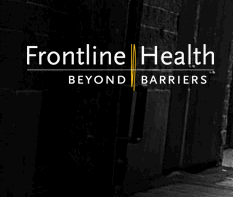Canadian Aboriginals face numerous social, political and historical barriers to education. So how do you prepare Aboriginal students for university and how do you make sure their studies are successful?
It’s well known that receiving care from health professionals who share your culture and traditions results in far more successful outcomes. But out of approximately 300,000 Registered Nurses in Canada, only 1,200 are Aboriginal.
Historically, there have never been enough Aboriginal Registered Nurses in Canada. But an innovative and effective new program developed through a partnership between the University of Lethbridge and local First Nations communities has begun to improve the odds.
FIRST NATIONS COMMUNITIES AND UNIVERSITY COLLABORATE TO SUPPORT ABORIGINAL NURSING STUDENTS
Narrator: It’s well known that receiving care from health professionals who share your culture and traditions results in far more successful outcomes. But out of approximately 300,000 Registered Nurses in Canada, only 1,200 are Aboriginal. In Alberta, both the First Nations communities and the University of Lethbridge have taken a giant step towards redressing this imbalance. Working in close collaboration, they have implemented a groundbreaking new program that encourages and prepares Aboriginal students to pursue a career in nursing, and ensures that their education prepares them especially well to serve in their communities upon graduation. Dr. Judith Kulig is a Professor in the Nursing Program in the Health Sciences Department at the University of Lethbridge. She has close ties with the local First Nations healthcare community.
Dr. Judith Kulig: For a whole variety of social and political and historical reasons, Aboriginal people don’t always feel comfortable in coming to a university environment to get an education, and they don’t always have the right combination of social factors that help them get there. And Chris Shade, who’s the CEO for the Blood Tribe Health Department, asked me to come down and meet with him about his issue of, ‘what are we going to do about no staff’ because they were so short of staff. There are a number of the Blood nurses who will be retiring in the next 10 or so years. How do we increase the numbers of aboriginal people entering nursing so that they can then provide care in their home communities? We know full well that aboriginal people providing care to Aboriginal people makes a lot of good sense in terms of quality of care and health status.
Narrator: The challenge was multi-layered. Many Aboriginal students, who might be interested in a career in nursing, don’t have the right complement of secondary school credits to qualify, and those who do get into university often struggle with serious culture shock. So how do you prepare Aboriginal students for university and how do you make sure their studies are successful? It took a partnership between several First Nations Communities and the University of Lethbridge to create the solution - SPANS – or the Support Program for Aboriginal Nursing Students. Dr. Kulig became the program’s Faculty Coordinator.
READ THE REST OF THE STORY HERE
AZ10162

